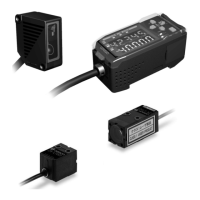Laser Safety
viii
Note 1. LEGEND
X: Shall
•: Should
---: No requirement
✩: Shall if enclosed Class 3b or Class 4
MPE: Shall if MPE is exceeded
NHZ: Nominal Hazard Zone analysis required
✝: Applicable only to UV and IR Lasers (4.5.1.2)
2. LSO: Laser Safety Officer
An individual shall be designated the Laser Safety Officer with the authority
and responsibility to monitor and enforce the control of laser hazards, and to
effect the knowledgeable evaluation and control of laser hazards.
For your reference, see ANSI Z136.1-1993, Section 1.3.
Laser Product Classifications
•EN
Note: Conditions for safe viewing of diffuse reflections for Class 3B visible
lasers are: minimum viewing distance of 13 cm between screen and cor-
nea and a maximum viewing time of 10 s. Other viewing conditions
require a comparison of the diffuse reflection exposure with the MPE.
Eye Protection (4.6.2) --- --- --- --- •
MPE
X
MPE
Protective Windows (4.6.3) --- --- --- --- X
NHZ
X
NHZ
Protective Barriers and Curtains
(4.6.4)
--- --- --- --- • •
Skin Protection (4.6.5) --- --- --- --- X
MPE
X
MPE
Other Protective Equipment (4.6.5) Use may be required
Warning Signs and Labels (4.7)
(Design Requirements)
--- --- • • X
NHZ
X
NHZ
Service and Repairs (4.8) LSO Determination
Modification of Laser Systems
(4.9)
LSO Determination
Control measures Classification
Class Description
Class 1 Lasers which are safe under reasonably foreseeable conditions of operation.
Class 2 Lasers emitting visible radiation in the wavelength range from 400 nm to 700 nm.
Eye protection is normally afforded by aversion responses including the blink re-
flex.
Class 3A Lasers which are safe for viewing with the unaided eye. For laser emitting in the
wavelength range from 400 nm to 700 nm, protection is afforded by aversion re-
sponses including the blink reflex. For other wavelengths the hazard to the unaid-
ed eye is no greater than for Class 1. Direct intrabeam viewing of Class 3A lasers
with optical aides (e.g., binoculars, telescopes, microscopes) may be hazardous.
Class 3B Direct intrabeam viewing of these lasers is always hazardous. Viewing diffuse re-
flections is normally safe (see note).
Class 4 Lasers which are also capable of producing hazardous diffuse reflections. They
may cause skin injuries and could also constitute a fire hazard. Their use requires
extreme caution.

